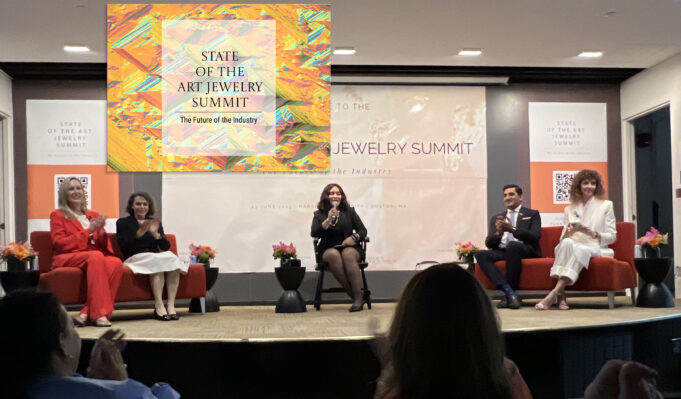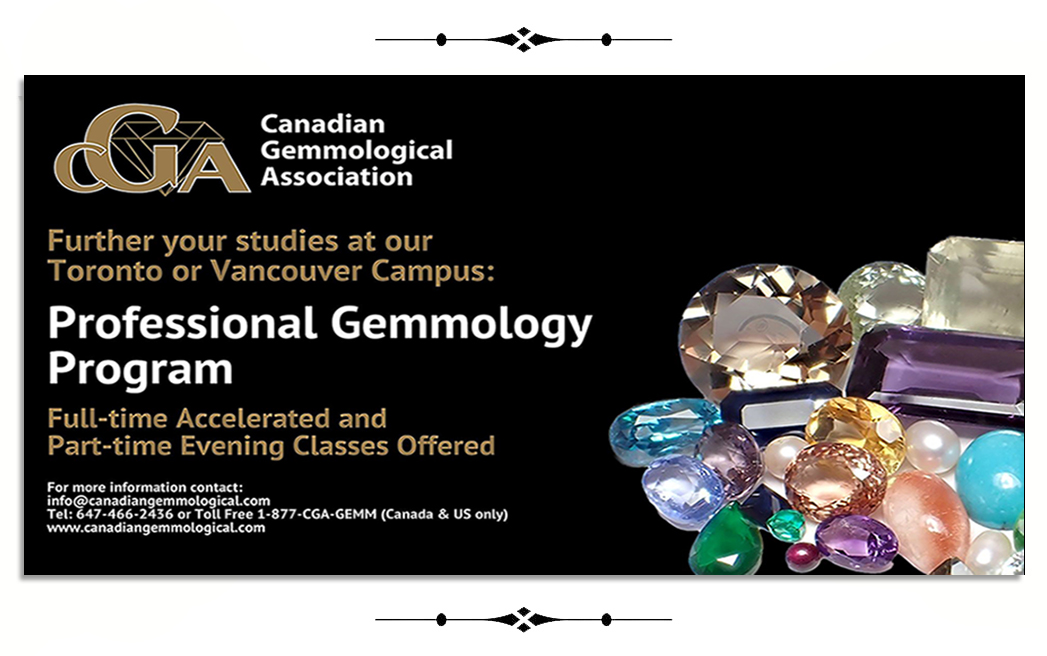Sanctions, Supply Chain, & Traceability
State of the Art Jewelry Summit, Harvard
The Panel – “Supply Chains: How to Navigate Sanctions and Conflict”
with
Tiffany Stevens, CEO and General Counsel of the Jewelers Vigilance Committee (JVC) (far left)
Monica Stephenson, Founder of ANZA Gems (far right)
Esther Oberbeck, Senior Vice President Strategy Development, DeBeers (center left)
and
Shreyans Dholakia, Director of Marketing & Information Technology departments of Shree Ramkrishna Exports Pvt. Ltd. (SRK) (center right)
moderated by Adrianne Sanogo, Co-founder, Board Member and Education Chair of the Black in Jewelry Coalition.
Continuing our review of the Harvard Jewelry Summit, we bring you panel #4, a conversation about the supply chain, and driven by DeBeers research data, what you might consider for your business success.
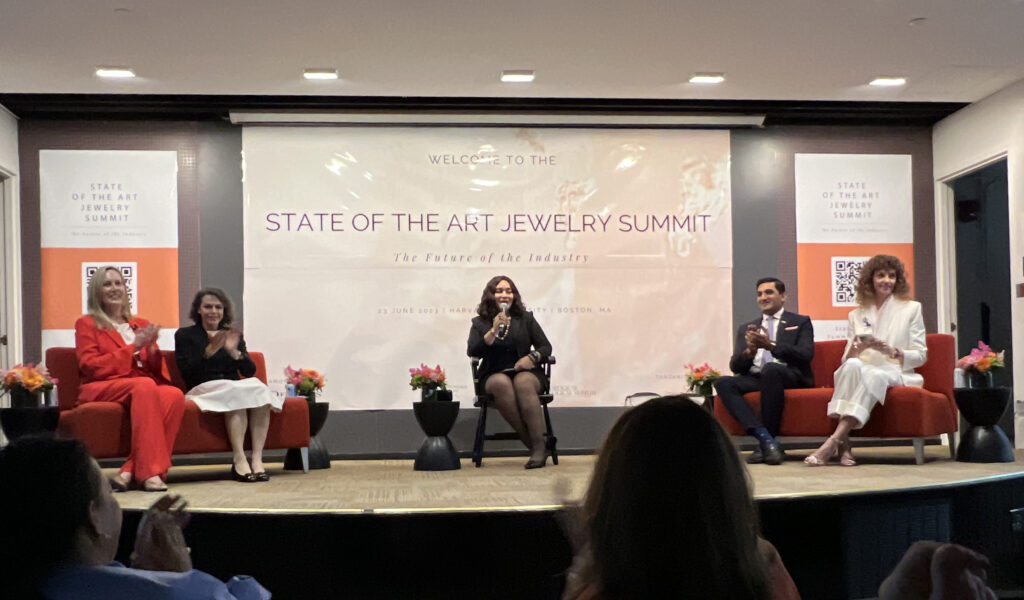
Sanctions – the Good and the Bad
“Sanctions are there to encourage behavior modification using restrictions, or blocking the flow of money to problematic nations around the world.” And so begins our discussion from Tiffany Stevens, JVC CEO and General Counsel. “You can sanction the person, you can sanction a company, you can sanction the product, but the purpose behind that is to stop the supply of resources to an actor in the world.” Of course, we are talking about Russian Diamonds and Vladimir Putin, President of Russia. “No one is trying to punish diamonds as a category,” says Stevens. “What we’re really trying to do is make sure that fresh money is not being sent to, in this case, the Russians, and specifically, Putin.”
Russia’s unprovoked attack on Ukraine has sent the global economy into a spin. Sanctions have been put in place by many G7 countries to make it clear to Russia that this attack must stop.*[see New York Times post that speaks of a formal G7 announcement expected in September]
It is known in the gem industry that Russia’s income from ALROSA‘s rough diamond sales is seriously important. Sanctions preventing the purchase and sale of Russian diamonds has been implemented. And while it should send a message to Russia, we do not see the necessary effect. At the same time, it is putting a serious wrench in the gem quality diamond sector.
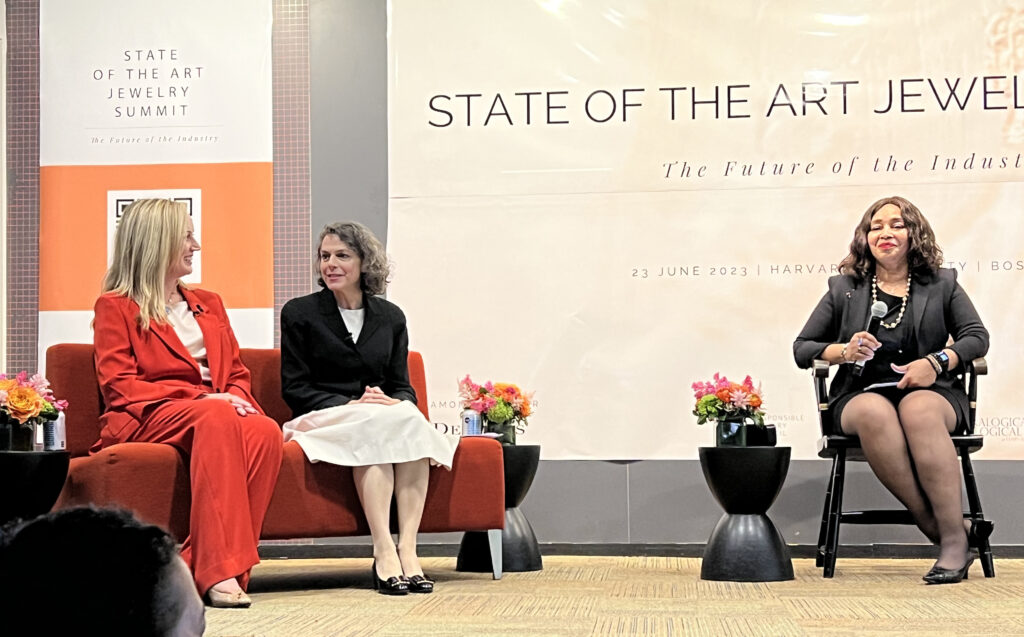
“So, do Sanctions work?” asks Stevens. “There are probably ‘a million’ articles you can read about sanctions as to whether or not they work. I personally think they’re worthwhile to do everything we can when we see atrocities around the world.”
But have they worked against Russia? Maybe, maybe not.
There’s a problem. While Europe (Antwerp – one of the world’s largest diamond cutting centers) braces for sanctions coming soon which could halt the flow of Russian rough, India (probably THE world’s largest diamond cutting center) has no sanctions regarding the purchase and sale of Russian diamonds.
This is where it gets interesting because we have on this panel, Shreyans Dholakia from SRK diamonds in Mumbai.
Stevens continued. If sanctions are to work, there needs to be global cooperation. “We’re not going to be putting onus on small players inside the US market to stop Russian diamonds. We want them to be stopped before they come to the U.S. And to help make this happen, it’s important to have harmonious, healthy working relationships with our partners around the world.”
Making certain her panelist hears, she reiterates, “… and we’re relying very much on the Indian investors to be our partners in making this a practical solution.”
Taking a Slight Detour to be Positive
Redefining supply chain, Shreyans Dholakia, of Shree Ramkrishna Exports (SRK diamonds) with their approximately 2,000 cutters, proposed that the supply chain doesn’t simply start from mining and end with the sales counter. “But in the industry, there’s a separate supply chain for mining. There’s a separate supply chain for crafting diamonds (turning rough into polish), and then there’s this other supply chain for just getting polished diamonds set into jewelry, and then from jewelry to selling to consumers.”
Focusing on the positive, Dholakia talked about success. “There was discussion some years ago about child labor, and about harsh conditions in diamond polishing. But times change, and you are all welcome to India to witness for yourself what is magnificently happening while we can work a rough stone into polished. And now with RJC (the Responsible Jewellery Council), many members in the diamond pipeline are all RJC members and they (RJC) make sure that the Indian diamond industry is conflict free.”
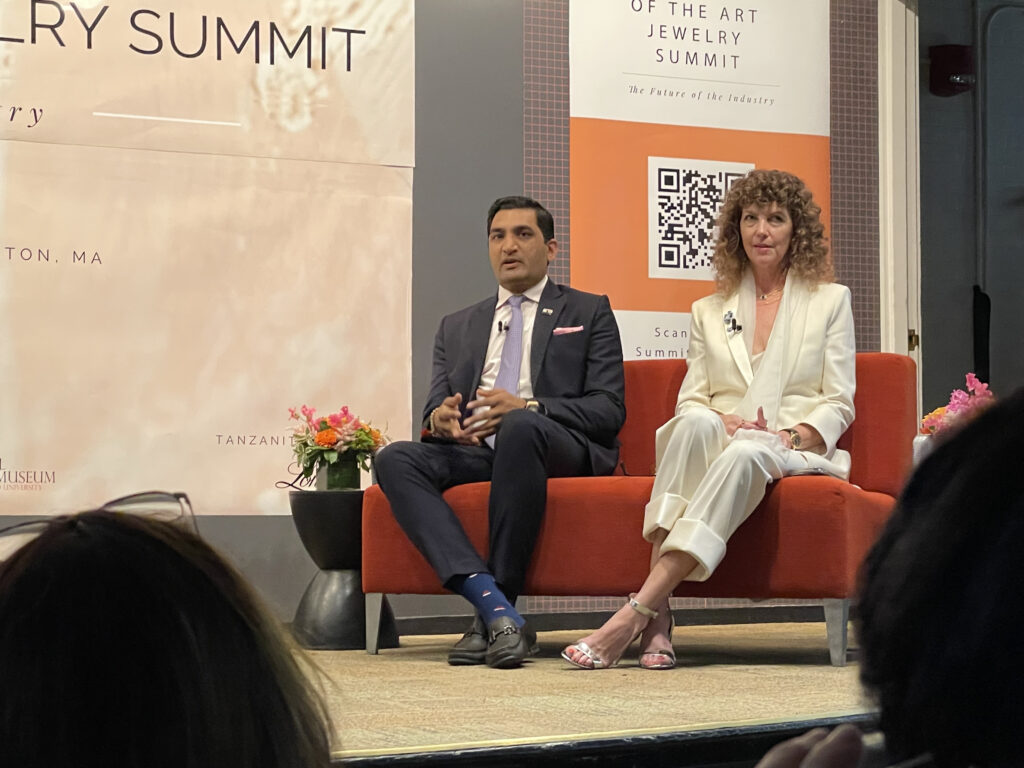
Conflict Free?
The Roskin Gem News Report was told that SRK does cut Russian diamonds, but will not sell them to countries who have sanctions against Russia. While there was no mention of Russia in Dholakia’s participation, we understand that a reduction in rough would mean a reduction in production. And they have a large number of cutters they need to keep employed.
And he does make just that point.
“We have to look at the impact that our industry is making in terms of all parts of our supply chain. If you look at the diamond processing part, the cutting and polishing, [which is their main focus] that particular supply chain is also doing a lot for the people around them, in their locality.”
Dholakia notes that in India, there are spiritual rules that, when followed, do help the local communities. “I assume every year that the industry is spending close to $40 Million. In India, we have a rule that at least one percent [of all profits], will be spent for the good of the society.” (1% of all total profit, with total profit being estimated at $40 Billion.)
“So, this money is not going in the pockets of the owners, but to the welfare of the society, more than 100 schools across the region, hundreds of thousands of students, … and more.”
The Data Says Yes
No matter how you define “supply chain,” it permeates the conversation.
“You know, the entire value of this industry starts with a decision, and that decision is ‘I’m going to part with my disposable income. And I’m going to acquire (to buy, to purchase) a product that comes with emotions that makes me feel better. Jewelry!’” begins Esther Oberbeck, Sr Vice President, Strategy Development, DeBeers
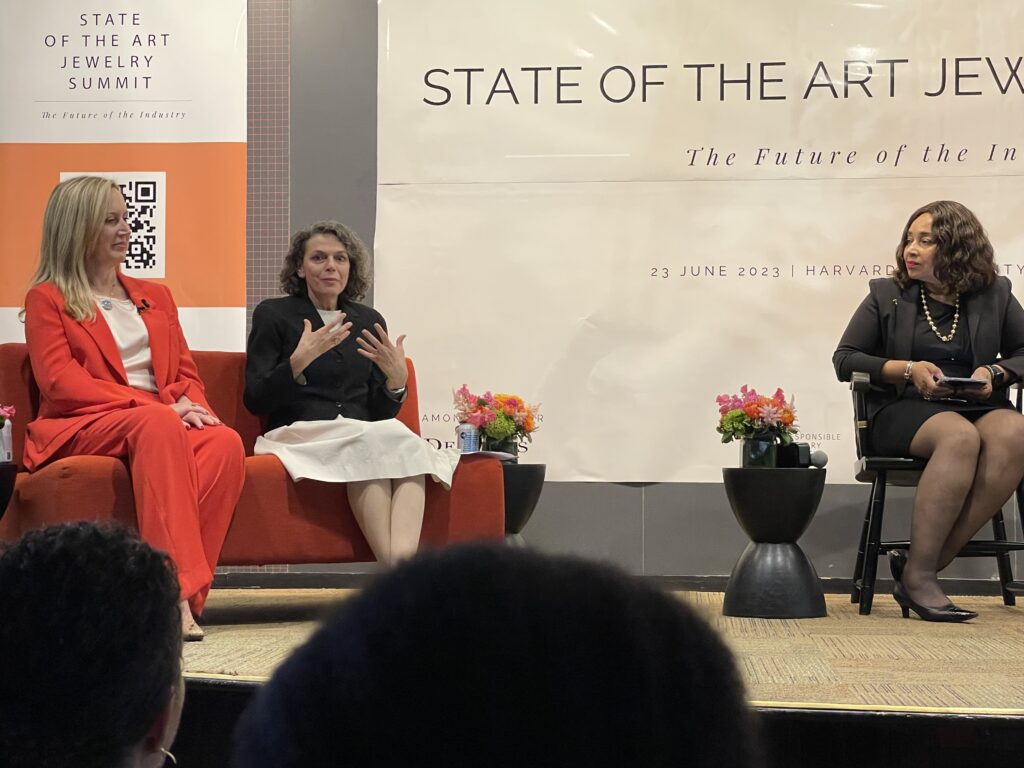
For Oberbeck it’s all about the next generation. “How are they going to make these decisions?”
“We know how, because we invest, as in billions, 10s of billions of dollars into research. We speak to 10s of thousands of women every year in the US, in China, in India, in the Gulf States, in Japan and other markets, and we ask the question a lot.” And so she knows, because they’ve been tracking this for a long time.
Oberbeck has the data to keep DeBeers focused. And we all focus on DeBeers. “We have some confidence about what’s coming. And the stakes couldn’t be higher.” That’s because they’re looking at the next generation, generation alpha, which totals 1.2 billion consumers. That’s bigger than the millennials. “And they tell us something quite interesting, that ethical and environmental factors are important.” In fact, they are just as important as price and design in their in choosing what they’re going to buy, says Oberbeck. “The more important the occasion, the more important these considerations.”
Maybe These Numbers Will Catch Your Eyes
“Research also tells us that about 1 in 2 tell us they’re willing to pay a premium for ethical credentials of your brand,” says Oberbeck. “And that premium is on average 15%, versus a non-ethically credentialed brand. Younger people are a lot more willing to pay an even higher premium than the older generations!”
As we mentioned previously, there’s a story to be told. And those who are willing to make a purchase, want to hear the story. “They are looking for those stories about how we as an industry are solving really big problems.”
Google Search Your Own Site
“42% of women tell us that they are researching. They are looking for information. Almost 40% of young people say they are looking for information, and they often can’t find that information,” says Oberbeck. Too many websites either have their stories hidden somewhere, where you can’t find it, or it’s not there.
If they can find the good story, they will remember the brand.
Supply Chain information is crucial. If you actually show the positive impact you have with a community, or the environment, or that you have confidence in your Provenance by knowing your supplier, or that you are helping to leave better communities, or your commitment is to carbon neutrality, the consumer will appreciate your brand.
“I think that this idea that we need to be more vocal about it is essential! Because if we don’t do it, we will miss out on the opportunity.” People are searching. Businesses are searching. Your competition is searching.
The Small Brand that Speaks Out
Monica Stephenson is the founder of ANZA Gems, a brand that promotes a transparent, traceable journey from the mines of East Africa to the consumer.
Stephenson presented the supply chain that works with the artisanal side of the industry. She is not an artisanal miner, but she travels to locations where she participates with them one-on-one. As she says, her business model is one of a very short supply chain. “I literally sit across the table from a woman miner,” says Stephenson.
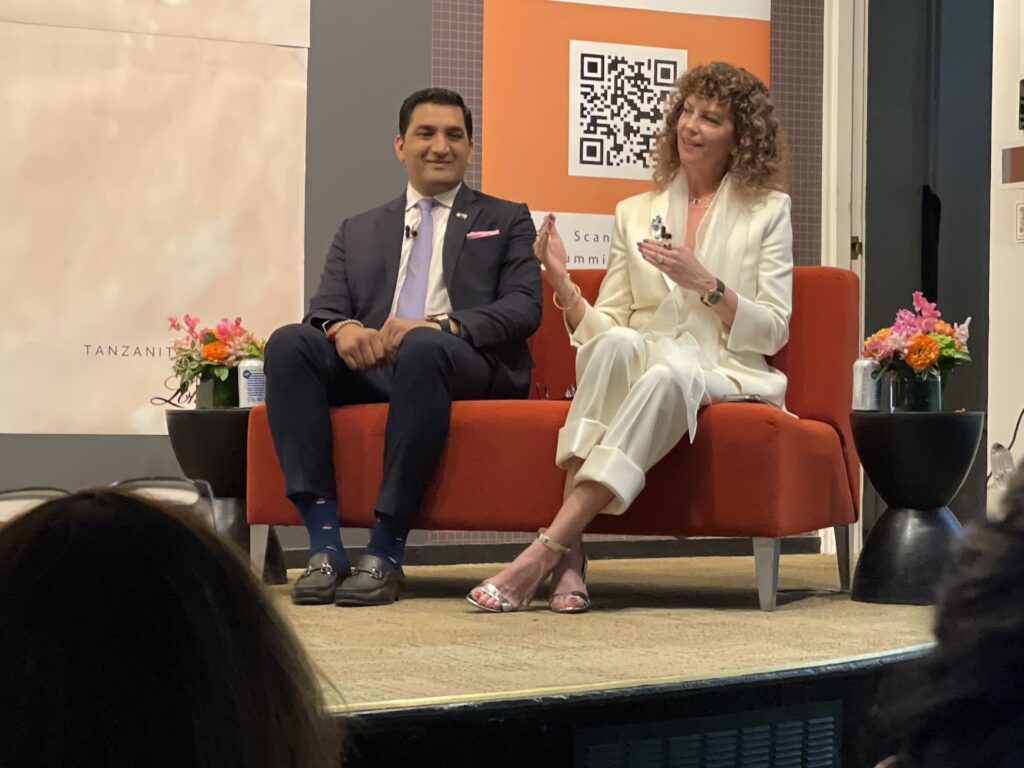
As opposed to traveling to Arusha and working with a broker, Stephenson goes to the miner, buys the gems from the miner, who then pays the broker. She does this several times every year. She believes that this gets more money into the hands of the miner, and shortens the chain.
As for her supply chain, there’s the miner, and Stephenson the buyer. The gem then goes to Stephenson’s cutter, women artisanal cutters in the U.S.
Stephenson’s business model sounds easy, but there is the all important learning curve you need to struggle through. “We do business in Tanzania, Kenya, which are relatively stable democracies. They have some structures in place. But I will say that there are challenges.” Exporting goods, just for example, are never the same from one visit to the next. “Sometimes my exports are more challenging than others.”
Traceability Supply Chain Challenges You Didn’t Think Of
Even though, as a rule, Stephenson asks their miners to register for mining licenses, there are places in the world where it is not safe for the artisanal miners to register. For example, in some areas where the miners have a registered license, Stephenson recounts that, “as soon as the miners start producing, suddenly, either the government or other bad actors, they are very interested in what the miners are producing! Even more so for the more valuable materials!” Does your traceability supply chain allow for unlicensed miners?
And speaking of traceability, we see that companies are not only including information about the actual mine from which the gem came, but also GPS coordinates. But what happens when the miners require anonymity?
Audience participant Ruth Benjamin Thomas, of Black Opal Direct, a black opal producer from Lightning Ridge, Australia, noted that while the technology exists to pinpoint localities for sourced materials, that’s not really an option for the Ridge miners. “All Australian Opal is artisanally mined,” says Benjamin Thomas. “There are no large companies mining opal in Australia. Different areas have different rules, but essentially in Lightning Ridge you can mine a 50 meter by 50 meter plot. That’s it. And our miners don’t want you to know exactly which mine the opal comes from. They’re quite happy for you to know the field, but they want a level of anonymity.”
“So, when you considered traceability,” says Benjamin Thomas, “knowing the field where it comes from, the community that it’s part of is all wonderful. But just to temper it a bit, sometimes miners do want to remain anonymous.”
What Can You Do?
It is really time for you to examine your business materials, your website, and make certain that the important stories about who you are and what you do are easy to find. Make sure they are compelling enough to attract the younger buyer. As Oberbeck says, “I think that this idea that we need to be more vocal about it is essential!”



